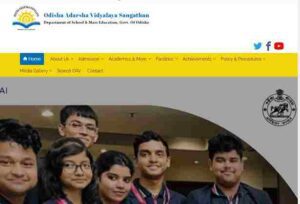
The Government of India offers various education loan schemes to support students who wish to pursue higher education in India or abroad. These loans are typically provided by banks and financial institutions under the guidance of government schemes. Here are some key features and details about education loans offered by the Government of India:
Interest Subsidy Schemes
The government provides interest subsidy schemes to support economically weaker sections and marginalized communities. Under these schemes, the government pays the interest on the education loan during the moratorium period, which is typically the course duration plus an additional grace period.
Collateral-free Loans
Many government-sponsored education loan schemes provide loans without requiring collateral for loan amounts up to a certain limit. This benefits students who may not have assets to pledge as security for the loan.
Flexible Repayment Options
Government education loan schemes often offer flexible repayment options, including extended repayment periods and moratorium periods to allow students to complete their education and find employment before starting to repay the loan.
Coverage of Expenses
Education loans typically cover various expenses related to education, including tuition fees, examination fees, hostel fees, cost of books and study materials, travel expenses, and other related expenses.
Eligibility Criteria
Eligibility criteria for education loans may vary depending on the specific scheme and the lending institution. Generally, students must be Indian nationals and have secured admission to a recognized course in an institution in India or abroad. Additionally, co-applicants such as parents or guardians may be required, especially for loans above a certain amount.
Loan Amount
The maximum loan amount that can be availed depends on factors such as the course pursued, the institution, and the repayment capacity of the borrower. The loan amount may cover up to 100% of the expenses in some cases.
Interest Rates
Interest rates on education loans may vary depending on factors such as the lending institution, loan amount, and the borrower’s credit profile. Government-sponsored schemes often offer competitive interest rates compared to standard personal loans.
Application Process
Students can apply for education loans directly through participating banks or financial institutions. The application process typically involves providing details about the course, institution, expenses, and financial background of the borrower and co-applicant.
Repayment
Repayment of education loans usually begins after the moratorium period ends, which could be after the completion of the course or after a certain grace period. Borrowers can repay the loan in equated monthly installments (EMIs) over the repayment period.
It’s essential for students and their families to thoroughly research and understand the terms and conditions of different education loan schemes offered by the Government of India and choose the one that best suits their needs and financial situation. Additionally, seeking guidance from financial advisors or educational counselors can help in making informed decisions regarding education financing.





